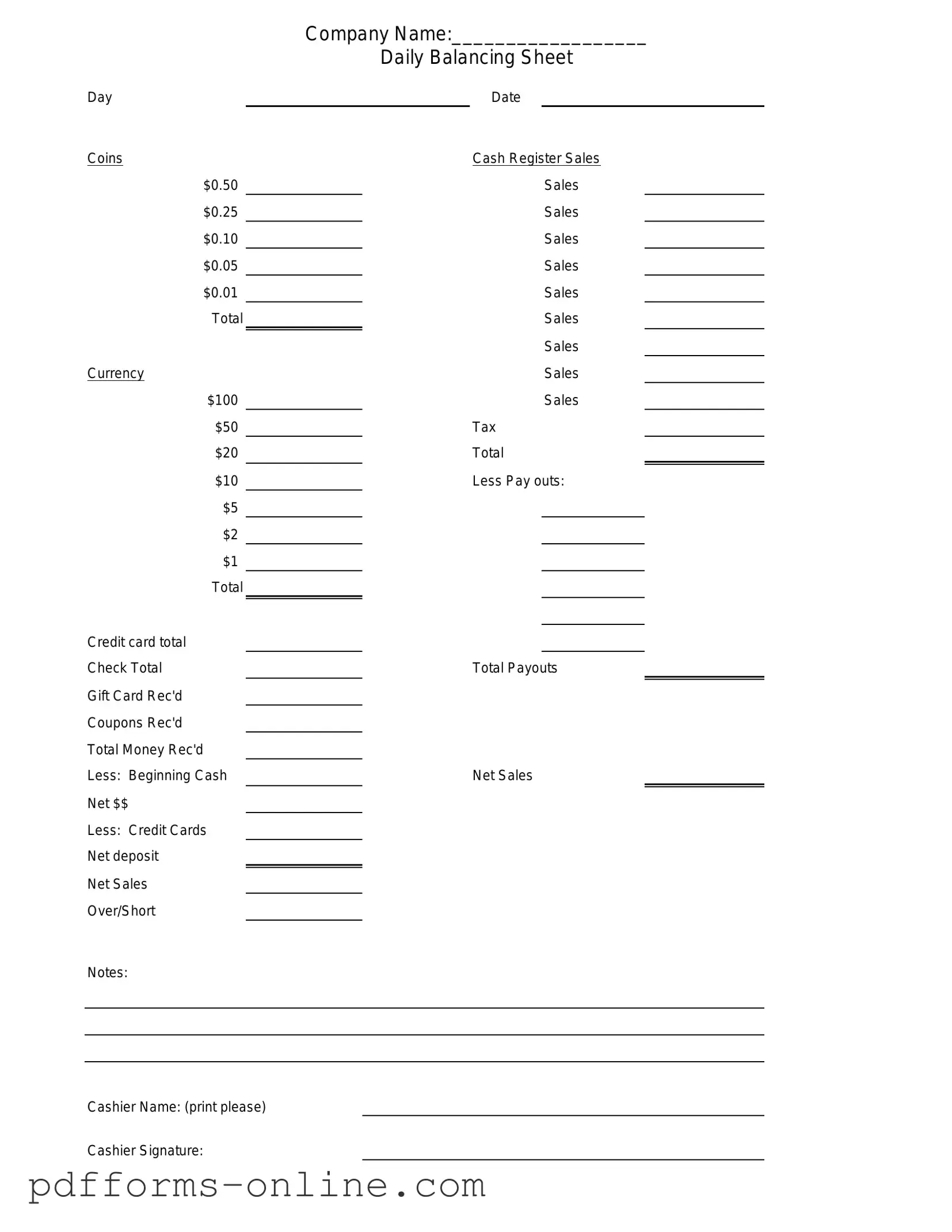The Cash Register Reconciliation Form serves a similar purpose by tracking the cash flow within a register. Like the Cash Drawer Count Sheet, it documents the amount of cash at the beginning and end of a shift, allowing for easy comparison. This form also includes sections for noting discrepancies, which can help identify errors or theft. Both documents are essential for maintaining accurate financial records and ensuring accountability in cash handling.
The Daily Sales Report is another document that shares similarities with the Cash Drawer Count Sheet. It summarizes the total sales for a specific day, including cash, credit, and other payment methods. While the Cash Drawer Count Sheet focuses primarily on cash, the Daily Sales Report provides a broader view of overall sales performance. Both documents help businesses track their financial health and make informed decisions based on sales trends.
The Bank Deposit Slip is also comparable to the Cash Drawer Count Sheet, as it records the amount of cash being deposited into a bank account. This slip includes details such as the date, total cash amount, and any checks being deposited. Like the Cash Drawer Count Sheet, it is essential for ensuring that the cash recorded matches what is actually deposited, helping to prevent discrepancies and maintain accurate financial records.
The Petty Cash Log serves a similar function by tracking small cash expenditures. This document records each transaction made from a petty cash fund, including the date, amount, and purpose of the expense. Both the Petty Cash Log and the Cash Drawer Count Sheet require meticulous record-keeping to ensure that all cash transactions are accounted for, promoting transparency and accountability in financial management.
The Expense Report is another document that parallels the Cash Drawer Count Sheet. It details the expenses incurred by employees for business purposes, including receipts for cash spent. While the Cash Drawer Count Sheet focuses on cash intake and outflow, the Expense Report emphasizes the outflow of cash. Both documents are crucial for budgeting and financial oversight, ensuring that funds are used appropriately.
The Inventory Count Sheet is similar in that it tracks the quantity of products available in stock. While it does not directly deal with cash, it is essential for understanding the financial aspects of inventory management. Accurate inventory records can influence cash flow, as overstocking or stockouts can lead to financial losses. Both documents require careful attention to detail to maintain accuracy in financial reporting.
The Time Sheet, while primarily focused on labor hours, shares a common goal with the Cash Drawer Count Sheet: accurate record-keeping. It tracks the hours worked by employees, which directly impacts payroll and overall business expenses. Both documents must be meticulously maintained to ensure that financial records reflect true business performance, contributing to effective budgeting and resource allocation.
When dealing with property ownership changes, it's essential to have the correct documentation, such as an Arizona Deed form, which facilitates the transfer process and safeguards the interests of the new owner. For individuals in need of various essential documents for property transactions, All Arizona Forms can be a valuable resource to ensure everything is filled out accurately and securely.
Lastly, the Profit and Loss Statement provides an overview of a business's financial performance over a specific period. It summarizes revenues, costs, and expenses, leading to the net profit or loss. While the Cash Drawer Count Sheet focuses on cash transactions, the Profit and Loss Statement encompasses all financial activities, making both vital for assessing the financial health of a business. Together, they provide a comprehensive view of a company's financial standing.

